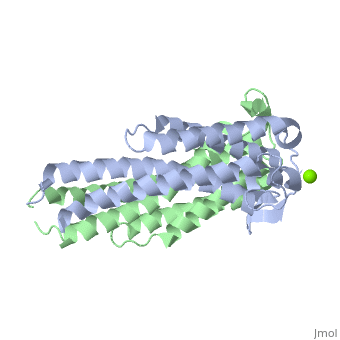User:Marvin O'Neal/OspC
From Proteopedia
(→'''Outer Surface Protein (OspC)''') |
|||
| Line 11: | Line 11: | ||
| - | =='''Ecological factors responsible for Human Lyme disease | + | =='''Ecological factors responsible for Human Lyme disease risk'''== |
Revision as of 01:21, 27 April 2012
Hello!
|
This is the which we came out after reading the primary literature.
Contents |
Introduction
Lyme disease is a typical epidemic in northeastern region. The patients begin with skin lesions which later develop into more severe neurological and cardiac symptoms. Human Lyme disease is the most prevalent tick-borne disease which is caused by Borrelia burgdoferi,a spirochete that is identified in Ixodes scapulars. The outer surface protein C (ospC) on Borrelia burgdoferi is induced when the tick migrates from guts to salivary gland during feeding period. OspC is diversed that it is categorized into 19 outer surface protein major groups (OMGs). Only four invasive allelic groups, A, B, I, and K, are responsible for causing human Lyme disease.
Ecology of Lyme Disease
Ecological factors responsible for Human Lyme disease risk
Dilution Effect Model
Outer Surface Protein (OspC)
OpC usually exists as a dimer with dominant structures of and . The model of OMG A, which is known as strain B31, is used to emphasize the polymorphism and pathogenesis of ospC. Since random coils are the most antigenic sites on the protein, pink and red colors were applied to protein in order to differentiate the polymorphism among these major antigenic sites (Earnhart 2010).The more polymorphic random coil on the protein model, residue 146 to 150 and residue 77 to 93, are colored in red. Two short β sheets are included in this region. On the other hand, two least polymorphic random coils, residue 115 to 119 and residue 161 to 169, are colored in pink.

